Should you loosen roots before planting
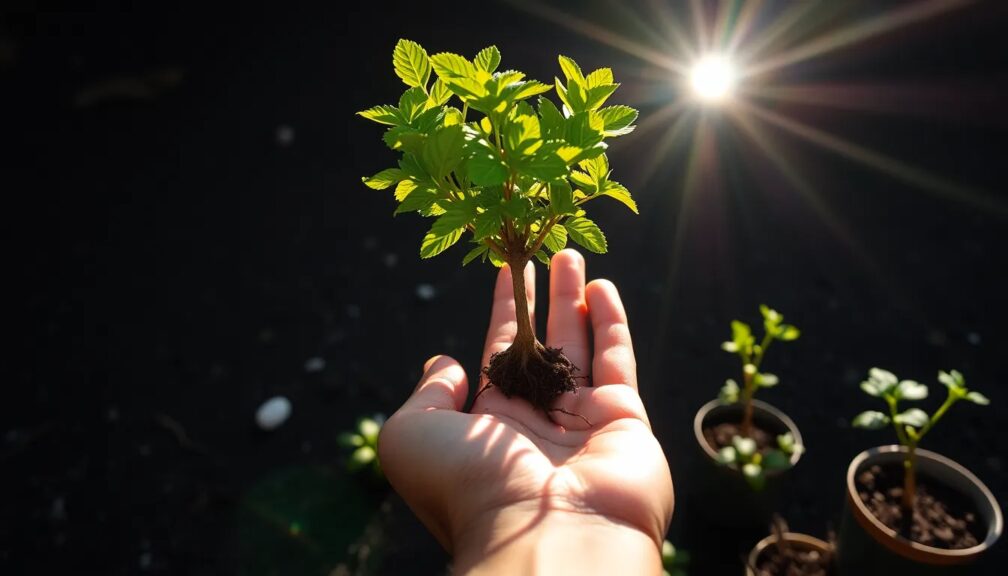
When planting a new tree or shrub, one critical step that's often overlooked is the treatment of the plant's roots. Gardeners are frequently faced with the question of whether they should loosen the roots before planting. This practice, known as root teasing or root pruning, can significantly impact the plant's growth and establishment in its new home. In this article, we delve into the reasons for loosening the roots, the benefits it can offer to your plants, and the potential pitfalls if not done correctly. Whether you're a seasoned gardener or a green-thumbed novice, understanding the importance of this step can be the key to a thriving garden. Join us as we explore the best practices for preparing your plants for successful transplantation.
Should I loosen roots when planting?
The question of whether to massage the roots of your new plant or tree before planting is not just a trivial detail—it can be the defining factor in the success or failure of your planting endeavor. Imagine investing time, energy, and resources into your garden, only to watch in dismay as your plants struggle to thrive or even survive. The secret to a flourishing garden could lie in the simple act of loosening those roots.
Understanding the root system is crucial. When confined to a pot, roots can become densely packed and tangled, leading to a condition known as "root-bound." This is where the magic of loosening comes in. By gently unraveling or teasing apart the roots, you encourage them to spread out and establish more effectively in their new environment.
Failure to address this can lead to continued circular growth patterns that strangle the plant from within. On the flip side, knowing the right technique to loosen the roots can result in a robust root spread, key to accessing water and nutrients and anchoring the plant securely.
Here's the real kicker: Not all plants appreciate the same level of root disturbance. Some prefer a delicate touch, while others can handle—and indeed benefit from—more aggressive treatment. It's an art as much as it is a science.
So, before you put shovel to soil, wouldn't you want to know the optimal approach for each plant in your garden? The answer lies in the nuanced world of horticulture—a world that beckons you to learn more and become the green-thumbed envy of your neighborhood. Don't let the mystery of roots keep you from achieving the lush, vibrant garden of your dreams. Discover the techniques that will transform your garden into a testament to your newfound knowledge.
Should I remove old roots before planting?
The dilemma of whether to excavate existing root systems from your garden before introducing new plants is one that can haunt both novice and experienced gardeners alike. The decision you make has the potential to dramatically impact the health and growth of your soon-to-be-planted garden. But here's the kicker—removing old roots can be as much about strategy as it is about horticulture.
Imagine this: You're about to plant a dazzling array of flowers, shrubs, or even a majestic tree. The soil is rich and the sun is beaming down with promise. However, lurking beneath the surface are the remnants of past plant life. Do you roll up your sleeves and dig out every last strand, or do you play the savvy gardener and use this to your advantage?
Before you grab your shovel in a frenzy or decide to let sleeping roots lie, consider the critical factors that will influence your garden's future.
1. Soil Quality: Old roots can contribute to the nutrient makeup of your soil. But when does this become a hindrance rather than a help?
2. Plant Type: Some plants are territorial in their underground domain. Could your new plants coexist with the old, or will they battle for supremacy?
3. Pest and Disease: Decaying roots can be a hotbed for unwelcome guests. Are you inadvertently inviting trouble?
The answers to these questions are just beneath the surface, and they could mean the difference between a thriving garden and a horticultural heartache. Your next steps are crucial, and with the right knowledge, you can turn a potential garden nightmare into a landscape of dreams.
Ready to uncover the secrets to successful planting amid the roots of yesteryear? Keep reading, and embark on a journey that will transform your gardening experience and lead you to a lush, vibrant oasis that'll be the envy of every green thumb on the block. Don't let uncertainty hold you back from achieving garden greatness. The future of your garden is in your hands, and it's time to dig deep—literally and figuratively.
Should I loosen soil before planting?
Unlock the full potential of your garden with a simple, yet often overlooked step. Imagine nurturing a thriving oasis, bursting with vibrant blooms and luscious fruits and vegetables, all starting from the ground up—literally. The secret lies just beneath the surface: the structure of your soil.
Discover the transformative power of loosening your soil before planting. By doing so, you introduce a world of benefits for your future plants:
- Enhanced root growth: Loose soil allows roots to spread out and down, anchoring plants firmly and accessing nutrients deep within the earth.
- Better water absorption: Moisture is critical, and well-aerated soil retains water efficiently, ensuring your plants stay hydrated.
- Improved nutrient uptake: In loose soil, roots can easily access the bounty of nutrients vital for optimal growth and health.
This preparation could mean the difference between a garden that's merely surviving and one that's flourishing with life. Don't miss the opportunity to give your plants the best possible start. Stay tuned to unearth more about this essential gardening technique and transform your patch of earth into a verdant paradise.
Should I detangle roots when repotting?
When you're standing there with a pot in one hand and a root-bound plant in the other, the question looms large: to tease or not to tease? The art of repotting is more than just transferring your plant into a new vessel—it's about ensuring the health, vitality, and continued growth of your beloved green companion.
As you carefully examine the tangled mass, remember that roots are the lifeline of your plant. They're the hidden heroes, tirelessly drawing water and vital nutrients from the soil. But when they start wrapping around themselves, it's a distress call that they've hit the boundaries of their current home.
Here's the deal: detangling roots, also known as root-pruning, can stimulate fresh growth and better water and nutrient absorption. Imagine giving your plant a new lease on life, where it can spread its roots and thrive like never before. Curious about how a simple adjustment in your repotting routine can make such an impact?
Consider the following compelling reasons to get your hands dirty and dive into those roots:
- Prevent root circling, which can choke the plant and lead to a premature demise.
- Encourage the growth of new root hairs, the plant's tiny sippers for water and nutrients.
- Give your plant the chance to expand into its new space, promoting a healthier root system.
Ready to transform your repotting process into a growth-boosting experience for your plant? Stay tuned for insider tips on mastering the detangling technique, ensuring your plant not only survives the transition but comes out stronger and more vibrant. You might just be on the verge of unlocking your plant's full potential!
Should you loosen roots before planting reddit
Discover the secret to a flourishing garden that might just be hidden in the details of root preparation. Gardeners around the world swear by this method, yet many beginners overlook its potential. As you stand before your new plants, ready to commit them to the soil, a crucial question looms: to loosen or not to loosen?
Imagine the feeling of watching your plants thrive, their roots spreading effortlessly through the nourishing earth. This vision of horticultural success is within reach, but it hinges on understanding the root of the matter. Here's why you can't afford to ignore this step:
- Improved root expansion: Loosening the root ball encourages roots to grow outward rather than circling inside the pot.
- Better nutrient uptake: Freed roots more readily absorb water and essential nutrients, which can lead to more vigorous growth.
- Prevents transplant shock: Gently teasing the roots can help your plant acclimate to its new home, reducing stress.
But wait, there's more to this story than a simple yes or no. The type of plant, the condition of the roots, and the soil you're planting in all play pivotal roles. Is it possible that in some cases, loosening the roots could do more harm than good?
The debate rages on, with experienced gardeners and horticulture experts weighing in. Join the conversation, and find out why this seemingly minor step might just be the difference between a garden that's merely surviving and one that's utterly thriving.
Don't let your green thumb dreams wither. Unearth the nuances of root care that will elevate your planting game to masterful levels. The journey to a vibrant garden is fraught with decisions, but with a little knowledge and the right moves, you'll be the envy of every plant lover on your block.
Stay tuned, as we delve deeper into this topic and uncover the insights that could transform your gardening approach forever. You won't want to miss what's coming next – the growth of your garden depends on it!
Consejo final: Gently loosening the roots before planting can promote better root growth and plant establishment. Make sure not to damage the roots in the process. Wishing you success in your gardening endeavors!
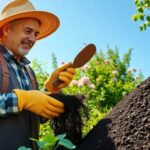 Should you till compost into the soil
Should you till compost into the soil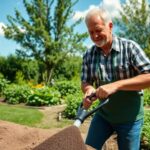 How do you loosen compacted soil without tilling
How do you loosen compacted soil without tilling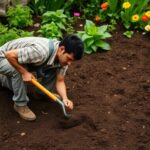 How do I fix hard soil in my garden
How do I fix hard soil in my garden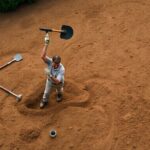 How do you break up hard compacted clay soil
How do you break up hard compacted clay soil Should you pack down soil when planting
Should you pack down soil when plantingIf you want to know more about similar articles like Should you loosen roots before planting you can visit category Gardening Tools.
Deja una respuesta